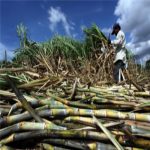Despite a shortage of sugar on the island, only 15 sugar mills will be operating in the upcoming harvest, confirming that the crisis in the sugar industry, once a major part of the country’s economy, remains unresolved after several years, reported Cibercuba.
Salvador Valdés Mesa, the Vice President of Cuba, spoke at a meeting in Havana on October 11 and 12, urging sugar workers to stay committed and promising that the working class “will not fail the Revolution,” as reported by the official newspaper Trabajadores. While asking for the workers’ dedication, Valdés Mesa also admitted that the industry faces serious challenges and needs more investment.
Jorge Luis Tapia Fonseca, another senior government official, expressed concern about the poor performance of nearly half of the sugar production units in the country. He stressed the urgent need for a thorough review of the sector and concrete steps to fix the problems.
The ongoing crisis is due to long-standing issues like the poor maintenance of machinery, shortages of fuel, and difficult weather conditions. Despite efforts by the government to renegotiate debts, raise sugarcane prices, and improve support for retired workers, these actions have not yet succeeded in turning the industry around.
Valdés Mesa and other leaders acknowledged that sugarcane production is still vital not only for the country’s economy but also for its culture and traditions. However, they said the industry’s recovery depends on deeper changes. The 2022-2023 sugar harvest, which produced 350,000 tons of sugar, was the worst since 1898 when production dropped to 300,000 tons during the War of Independence.
This steep decline highlights the fall of a sector that once made Cuba one of the top sugar exporters in the world. Of the 455,198 tons of sugar the government had planned to produce, only 77 per cent was achieved.
The real cost of this crisis is felt by the people. The price of a pound of sugar has soared to 500 pesos due to the shortage, making it difficult for families across the island to afford this essential product.


















